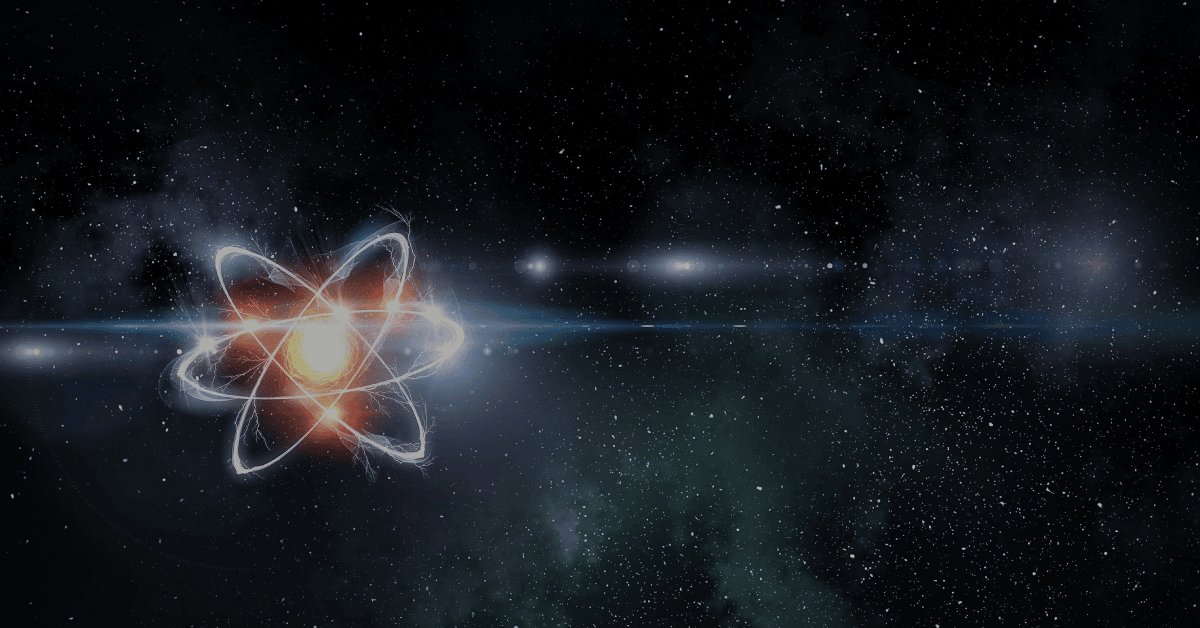This year, we’ll be running a series of episodes discussing ideas which we think remain underappreciated by investors and wider society. As investors who focus our energy on long-term structural trends, we spend a lot of time thinking about the future. Sometimes we find that important trends and developments are missed, often drowned out by the noise of the news cycle and short-term current affairs. This week, we’ll be discussing what we think is a widely misunderstood and underappreciated technology which could save humanity from catastrophic climate change: nuclear power.
Climate change is arguably the biggest single structural trend facing the global economy today. The process of burning fossil fuels emits greenhouse gases (primarily carbon dioxide) and these are increasing the earth’s average surface temperatures. Current estimates indicate that without radical action to reduce the burning of fossil fuels, the continued emissions of greenhouse gases will cause catastrophic climate change.
Today, even after decades of heavy investment in renewable energy sources, total global energy supplied by wind and solar represents just 2% of total energy output. Meanwhile fossil fuels still supply well over 80% of total global energy. It is becoming increasingly clear to leading scientists and engineers involved in energy and climate research that renewables (solar & wind) cannot solve the problem of climate change alone.
Even with a forecast of aggressive expansion of renewables, the world is expected to be burning record amounts of fossil fuels into the 2040s! There is a wide gulf between what is needed to reduce global greenhouse gas emissions to tackle climate change versus what is actually happening. The world needs to cut its addiction to fossil fuels and must do it quickly.
Renewable sources like wind and solar only offer part of the solution. These energy sources are greenhouse gas emission free. Today wind and solar are, in the right locations, cost competitive with fossil fuels. The problem with renewables alone is that they are intermittent sources of energy. There isn’t always sufficient wind to spin wind turbines and the sun doesn’t always shine. A modern electricity grid can have some intermittent sources of energy but it cannot be dependent on intermittent sources alone. Energy storage could be part of solving this problem but technological progress in energy storage technology has been very slow and we are decades away from battery technology that can store energy at scale for a modern grid to rely on renewable energy sources alone.
Modern electricity grids require something called base-load power to keep the lights on. Base-load power is a constant high-energy source of energy into an electricity grid that meets the minimum electricity demand for the whole grid. Without base-load power a modern electricity grid cannot function. Historically base-load power has been provided by fossil fuels, nuclear, or hydro power. These power plants can be kept running night-and-day to keep base-load power pumping into the electricity grid. The intermittency of wind and solar means they are not able to provide base-load power to a modern grid.
To combat climate change, the world needs to roll out at scale a source of high-energy base-load power that emits zero greenhouse gases. Alongside renewables, this would dramatically reduce demand for fossil fuels. Without the base-load component, renewables alone will be unable to reduce demand for fossil fuels fast enough for the worst effects of climate change to be mitigated.
Nuclear power is the only energy source that can provide base-load, high-capacity power into a modern electricity grid with zero greenhouse gas emissions (outside of limited use cases for hydro power). The use of nuclear power today already avoids the emissions of 2 billion tons of greenhouse gases every year. This is because without nuclear power, coal or gas fired power stations would have to take their place in providing base-load power. This avoids the equivalent of the greenhouse gas emissions from 400 million petrol-driven cars every year.
Uranium (the fuel for nuclear power stations) is incredibly energy dense compared to fossil fuels. Burning 1kg of coal will generate approximately 8kWh of energy, 1kg of oil will generate 12kWh, while the fission of 1kg of uranium will generate 24,000,000 kWh of energy. Uranium has 2 million times the energy density of coal.
The operating costs of a nuclear plant are also much lower than other energy sources, as the fuel (uranium) is cheap and extremely energy dense, the lifetime of a plant is long (+60 years) and the load factor of nuclear plants (the % of capacity they operate at over their lifetime) is very high at +90%. When these factors are taken into account, it dramatically lowers the relative lifetime costs of nuclear power versus other energy sources. Cost comparisons between energy sources often fail to include the aforementioned factors, which exaggerates the relative cost benefits of renewables or fossil fuels vs. nuclear. On these lifetime cost comparisons, nuclear is in many cases the most cost competitive source of energy available to electricity grids today.
Despite the nuclear doomsday-talk from many environmental activists in Europe and the US, the long-term future for nuclear power is increasingly positive, driven by emerging markets and climate change. The gap between perception and reality for the average person on climate change is dramatic, but the numbers do not lie. Germany, for example, still relies heavily on burning lignite coal (the dirtiest form of energy production available) for its electricity. And this is despite spending $600 billion on renewables since 2011. Today Germany has the highest household electricity bills in Europe and it has still failed to cut greenhouse gas emissions, all because of its flawed decision to shutdown its nuclear plants following the 2011 Fukishima accident. The reality of removing nuclear from its grid has been revealed as being flawed. The lesson from Germany is: renewables on their own cannot run a clean electricity grid.
The thinking on nuclear is changing, even among environmentalists. One of the founders of Greenpeace has publicly announced his change of attitude toward nuclear. Bill Gates (founder of Microsoft) agrees and he is investing some of his personal fortune into nuclear power to help solve climate change.
Given mankind’s current suite of technologies, it cannot mitigate climate change without nuclear power being a major source of future energy supply, much greater than current energy forecasts imply. As climate change moves up the political agenda in the developed world, the stark reality of the limitations of renewable energy sources will make nuclear an increasingly unavoidable part of the solution (we already have Germany’s failed energy policy as a case study). Meanwhile in emerging markets, where air pollution and demand for reliable electricity is driving massive long-term increases in demand for low pollution and reliable energy, nuclear is already a large part of the solution and could likely be relied on even more as climate change becomes an issue those countries help to solve. For China and India in particular, who both rely on imports of oil and natural gas, nuclear offers a strategic advantage in the supply of reliable base-load power and they are already rolling out ambitious plans for increasing their nuclear power capacity.
But (we hear some of you ask) what about nuclear power’s safety problem? Let’s dig into the numbers here. If we look at the average number of human deaths that can be linked to different sources of energy production, adjusted to show the number of deaths for every TWh of energy produced, including all of the deaths that have been attributed to nuclear power accidents (Chernobyl, Fukishima, et al.) since the technology was invented, on this metric, nuclear is even safer than solar (deaths linked to accidents from installing or manufacturing solar panels) and safer than wind power (accidents during manufacture or installation of turbines). When compared to coal, still the world’s largest source of base-load power, nuclear is 2,500x safer. Coal air pollution has killed millions of people and continues to kill tens of thousands of people every year globally from respiratory illness. Replacing all coal-fired power stations globally with nuclear would reduce air pollution related deaths by hundreds of thousands over the next two decades. It is estimated that nuclear power has to date saved 2 million lives, people who would have died from air pollution caused by fossil fuel plants that would have been built in place of nuclear plants. Nuclear power saves lives!
But (we hear some more of you ask) what about the plants themselves, aren’t they dangerous, what about Chernobyl and Fukishima? Let’s look at that more closely together. In March 2011, one of the most powerful earthquakes ever recorded struck the east coast of Japan. The earthquake generated a tsunami that killed 15,000 people and caused hundreds of billions of dollars worth of damage. The earthquake and tsunami hit one of Japan’s nuclear reactors located on the east coast of the country, Fukishima, causing a reactor meltdown. Fukishima has joined Chernobyl as a sound bite for the dangers of nuclear power.
Another Japanese nuclear plant called Onagawa was located 60km closer to the epicentre of the earthquake. This plant suffered virtually no damage. The nearby town of Onagawa was destroyed by the quake and tsunami. This nuclear plant’s construction standards and seawall had been upgraded and so the plant withstood one of the most powerful earthquakes in recorded history. In fact the local town’s population were saved by the nuclear plant. They had been trained to seek refuge in the nuclear plant during an earthquake. When the 2011 quake hit, the population of the town sought refuge in the nuclear plant and emerged untouched. Again, nuclear power saves lives!
As climate change becomes an increasingly important political issue, nuclear power’s zero greenhouse gas emissions and high energy density attributes are likely to leave decision makers with little choice other than to invest in new nuclear capacity. This creates significant upside to current industry forecasts for nuclear reactor construction over the next two decades. The rise in demand for electricity from the shift into electric cars and eventually electric heating systems will further exacerbate this energy decision problem, leaving policy makers with the choice of much more fossil fuels (bad for climate change) or more nuclear (good for climate change).
This technology already exists, is underappreciated, and if rolled out properly and safely, could have a dramatic effect on limiting climate change.
Disclaimer: The views expressed in this article are those of the author at the date of publication and not necessarily those of Dominion Capital Strategies Limited or its related companies. The content of this article is not intended as investment advice and will not be updated after publication. Images, video, quotations from literature and any such material which may be subject to copyright is reproduced in whole or in part in this article on the basis of Fair use as applied to news reporting and journalistic comment on events.


